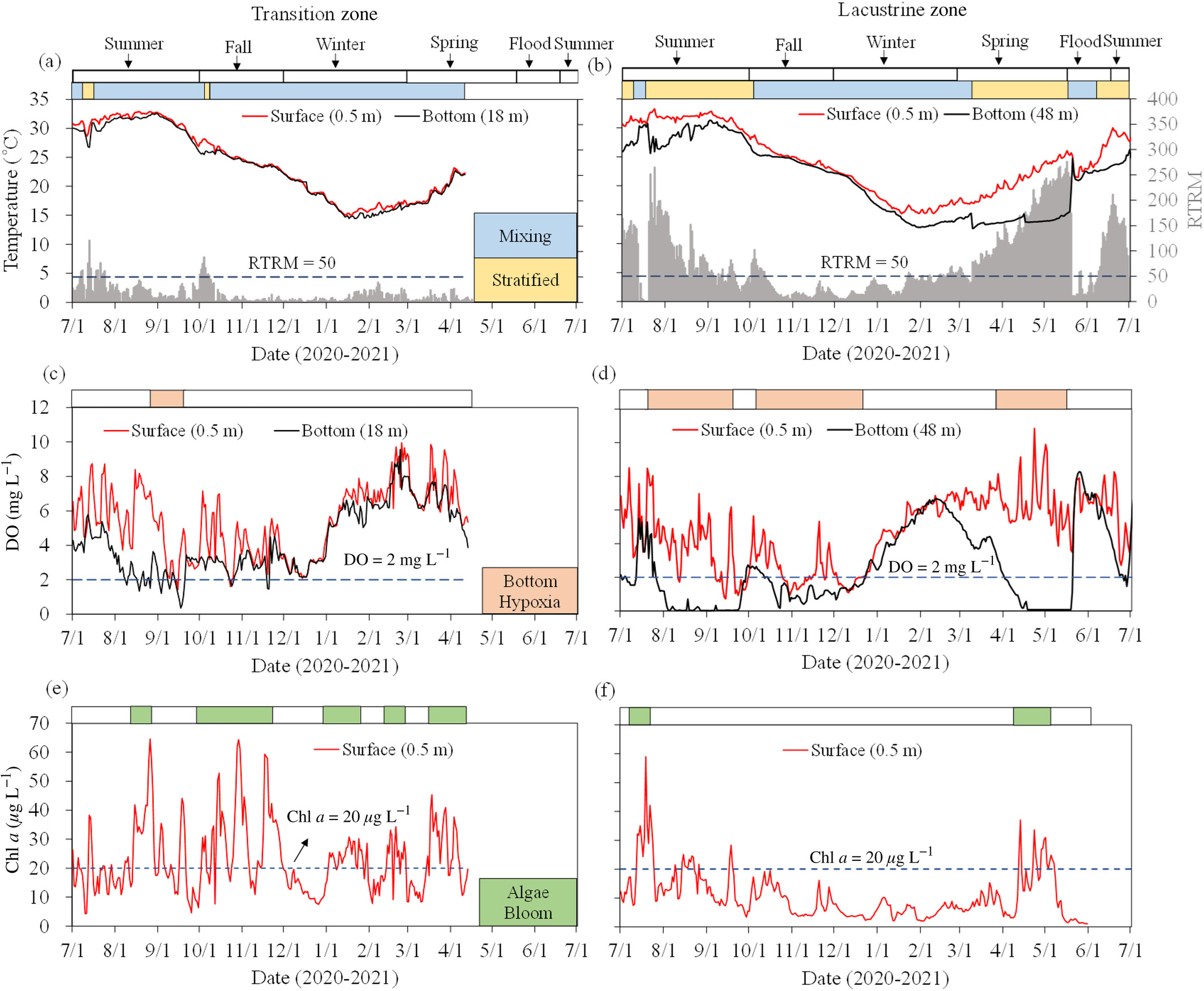Zetao Wu, Dan Yu, Qibiao Yu, Qian Liu, Mingzhen Zhang, Randy A. Dahlgren, Jack J. Middelburg, Liyin Qu, Quanlong Li, Weidong Guo*, Nengwang Chen*
Limnology and Oceanography
https://doi.org/10.1002/lno.12544
Published: 25 March 2024
Abstract
Recent studies suggest that hypolimnetic respiration may be responsible for greenhouse gas (GHG) emissions from deep reservoirs. Currently, quantitative evaluation of aerobic vs. anaerobic processes and priming (enhanced processing of organic matter due to the addition of labile carbon) in regulating GHG production and emissions across the reservoir-downstream continuum remains largely unknown. High-resolution, annual time-series observations in a large, subtropical reservoir (Shuikou) experiencing seasonal hypoxia in southeast China indicate that aerobic hypolimnetic CO2 production dominated in most periods of the stratified spring/summer with higher rates at higher temperatures. In addition, anaerobic production of hypolimnetic CO2 occurred in the late stratified spring/summer period, which stimulated hypolimnetic production of CH4 and N2O. Incubation experiments showed that priming in spring enhanced both aerobic and anaerobic production of excess GHGs. A late spring flood event generated the highest daily efflux of CO2 through the flushing of GHG-enriched hypolimnion waters. Turbine degassing contributed 59%, 93%, and 63% of annual CO2, CH4, and N2O effluxes, respectively. Moreover, annual downstream GHG emissions were similar to those in the transition/lacustrine zone of the Shuikou reservoir. Diurnal variation observations revealed net CO2 emissions even during algal bloom seasons. The reservoir-downstream river continuum was a year-round source of GHGs (218.5 ± 18.9 Gg CO2-equivalent yr−1; CO2 contributed 91%). However, the loss of oxygen also leads to increased production and storage of recalcitrant dissolved organic carbon (RDOC). Thus, identifying mechanisms controlling both GHG emissions and RDOC production is crucial to constrain the carbon neutrality issue of hydroelectric reservoirs in the context of climate change mitigation strategies.
